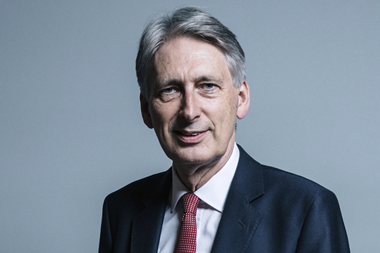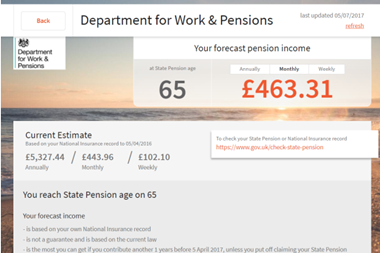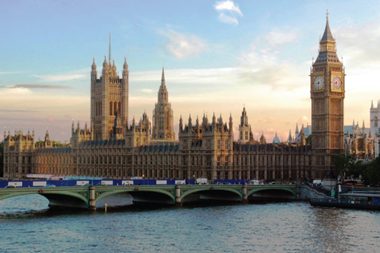The UK’s Department for Work and Pensions (DWP) has set out how it intends millions of savers to collate their benefits data, including handing the industry the bill and offering multiple dashboards from a range of providers.
Publishing its feasibility study today, the DWP outlined a range of points including who would be taking the lead on the venture, how the multiple dashboards would be shaped – and who would be paying for the initiative.
In the foreword to the report, Guy Opperman, minister for pensions and financial inclusion, said: “When it comes to crucial information such as pensions, people should have access to accurate and useful information, which alongside guidance or advice will allow them to make the best choices for their investments and retirements.”
The pensions industry would be encouraged to create a range of dashboards to cater for the different needs of the 22m people they were intended to serve, Opperman said, but the first, to be launched in 2019, would be a not-for-profit venture.
He added that, “in the absence of a clear industry lead”, the Single Financial Guidance Body (SFGB) – formed through the merger of three government-backed financial guidance and advice organisations to be launched next year – will “oversee an industry delivery group to enable successful implementation”.

An independent chair of this group will be appointed to “bring together a range of key players” including representatives from the pensions industry, financial technology companies and consumer organisations. Its first task would be to create and launch a non-profit dashboard, that will sit alongside those created by other providers wishing to run their own.
“For users, this means harnessing the innovation, ideas and expertise of industry to provide a choice of dashboards,” said Opperman. “At the same time, safeguarding the data and protecting consumers will be paramount. For taxpayers, this means industry foots the bill.”
‘Non-commercial provision essential’
Gregg McClymont, former Labour Party pensions spokesman and now director of policy for B&CE, provider of The People’s Pension, applauded the government “for recognising that such a complex and sensitive project as pensions dashboard project can’t be handed over to the private sector to run”.
Encouraging to see @DWP has listened to calls to put the Single Financial Guidance Body in charge of #pensiondashboard . For the dashboard to become a one-stop shop, state and public #pensions must be included pic.twitter.com/DND3UvYG8R
— The People’s Pension (@PeoplesPension) December 3, 2018
McClymont added: “The emphasis on building a non-commercial dashboard initially is crucial if the major benefit which dashboard offers – a single register that allows savers to see all their pensions in one place – is to be realised. That’s the big prize, rather than a commercial tool for providers to market their services.”
Darren Philp, head of policy at mastertrust Smart Pension, said the publication of the study marked an “important step” in engaging the UK population with their retirement saving and the emphasis was now on the industry turning it into a reality that was in the interests of all parties.
Philp, who joined Smart Pension from B&CE in the summer, praised the DWP for offering both a non-commercial version and “allowing the space for innovation by opening up pensions and allowing multiple dashboards when the right consumer protections are in place”.
Voluntary to compulsory
The government was to facilitate the initiative, Opperman said, and expected industry to supply data to a dashboard, on a voluntary basis, from 2019. He said existing legislation should allow this to happen, but the government would legislate to compel schemes to supply data “when parliamentary time allows”.
Additionally, the DWP said it would retain its Pension Finder Service (PFS) as a key element of the technical infrastructure behind all commercial and non-commercial dashboards.
The department added that, along with the development and delivery costs of the infrastructure and the first non-profit dashboard, the industry would also be asked to fund the PFS, identity verification and any new regulatory functions related to dashboards.
“There may be an opportunity to use existing industry levies to fund the dashboard service in a fair and equitable way,” the DWP added.
Pensions Bill will include DB White Paper, CDC and Dashboard, and is the only Bill DWP are bidding for in 2019 “and we’re very high up in the queue” pic.twitter.com/YqjVZH2OhM
— Adrian Boulding (@AdrianBoulding) December 3, 2018
Adrian Boulding, director of policy at NOW: Pensions, attended the launch of the DWP’s report this morning
However, former pensions minister Steve Webb, now director of policy at Royal London, claimed the initiative was suffering from “Brexit blight”.
He said: “The slow rollout is a real concern. This paper was itself eight months late and legislation is only promised when parliamentary time becomes available. Most worryingly, state pension data will not be on the dashboard from day one but will simply be included via a link to another website.”
The DWP said government would work with the industry delivery group to integrate UK state pension data into pensions dashboards, but until a method was established, a link to the Check Your State Pension website would be available.
But for Webb, this service “will seriously delay the scope for pension planning tools” that is meant to bring the whole savings landscape together.
Throughout December, the government is to engage with industry stakeholders and the public to inform its approach to facilitating an industry-led strategy.
The DWP’s consultation is open until the end of January and is available on the government’s website.











No comments yet